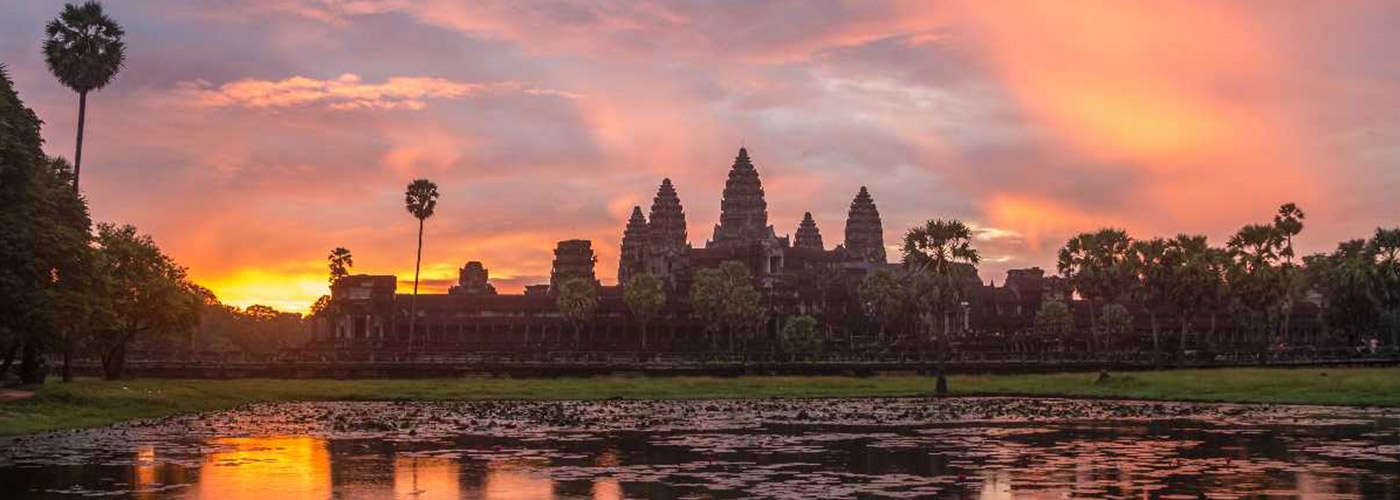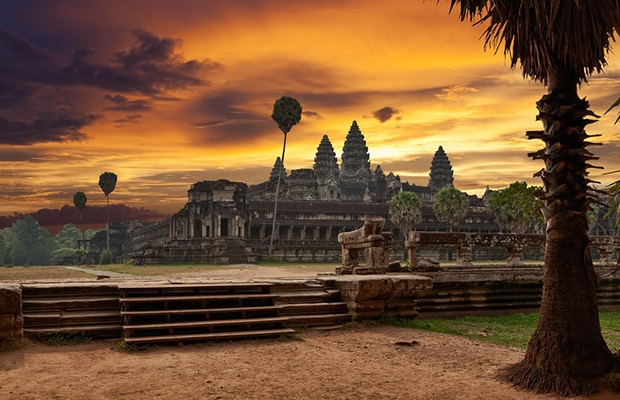
The Bayon (Khmer: ប្រាសាទបាយ័ន, Prasat Bayoăn [praːsaːt baːjŏən]) is a richly decorated Khmer Buddhist temple at Angkor in Cambodia. Built in the late 12th or early 13th century as the state temple of the Mahayana Buddhist King Jayavarman VII (Khmer: ព្រះបាទជ័យវរ្ម័នទី ៧), the Bayon stands at the centre of Jayavarman's capital, Angkor Thom (Khmer: អង្គរធំ).
The Bayon's most distinctive feature is the multitude of serene and smiling stone faces on the many towers which jut out from the upper terrace and cluster around its central peak. These faces have been associated with the Hindu God Brahma because of the four faces looking in different directions but archaeologists also associate it with Buddha despite the jewelry, crown marking which are not associated with Buddha. The temple has two sets of bas-reliefs, which present a combination of mythological, historical, and mundane scenes. The main conservatory body, the Japanese Government Team for the Safeguarding of Angkor (the JSA) has described the temple as "the most striking expression of the baroque style" of Khmer architecture, as contrasted with the classical style of Angkor Wat (Khmer: ប្រាសាទអង្គរវត្ត).






